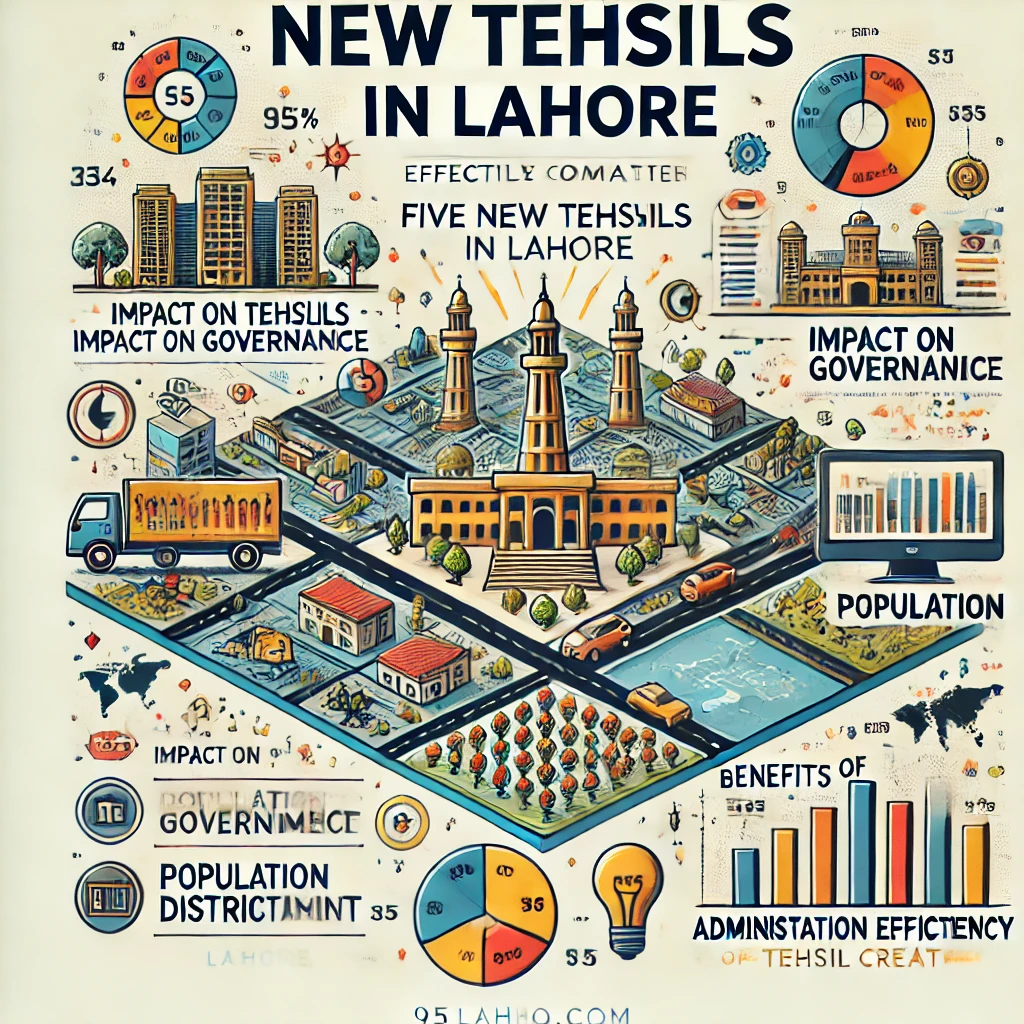Lahore to Gain Five New Tehsils as City District Division Plans Shelved
The bustling city of Lahore is set to undergo a significant administrative change with the creation of five new tehsils, marking a shift away from previous plans to divide the city into multiple districts. This decision follows ongoing debates among government officials regarding the best way to manage Lahore’s rapidly growing population and urban infrastructure.
Key Aspects of New Tehsil Creation
| Aspect | Details |
|---|---|
| New Tehsils | Ferozewala, Thokar Niaz Baig, Kahna, Kot Abdul Malik, Harbanspura |
| Population Management | Improves administrative efficiency by managing local population needs. |
| Governance | Enhanced service delivery and localized governance structures. |
| Cultural Preservation | Maintains Lahore’s historical and cultural identity while improving administrative control. |
| Economic Benefits | Potential boost in local economies through better resource allocation. |
Earlier proposals aimed to divide Lahore into two or three districts to better manage civic issues such as traffic congestion, infrastructure development, and service delivery. However, concerns about potential disruptions to Lahore’s cultural and historical unity, coupled with administrative challenges, led to the shelving of these plans. Instead, officials decided to increase the number of tehsils, which are administrative subdivisions, to streamline local governance.

The new tehsils proposed include Ferozewala, Thokar Niaz Baig, Kahna, Kot Abdul Malik, and Harbanspura. These areas were previously managed under broader district authorities, which often struggled to address local needs effectively due to the large population and area they covered. By creating these new tehsils, authorities hope to bring governance closer to the people, enabling more localized and efficient administration.

The decision to create new tehsils rather than dividing Lahore into separate districts was influenced by several factors. Key among them was the desire to maintain the city’s cohesive identity, which is deeply rooted in its rich cultural and historical significance. Dividing Lahore into multiple districts might have diluted this unique character, leading to concerns among heritage conservationists and local residents.
Population Distribution in New Tehsils
Administrative Efficiency Comparison
Key Benefits of New Tehsil Creation
Additionally, logistical and administrative concerns played a crucial role. Lahore’s complex governance structure, which includes various civic agencies like the Lahore Metropolitan Corporation and Lahore Development Authority, would have faced significant challenges if the city were divided into separate districts. By focusing on the creation of new tehsils, officials aim to enhance administrative efficiency without the disruptions that district division might entail(DAWN).
The creation of these new tehsils is expected to improve local governance and service delivery in Lahore. It will allow for more tailored administrative practices, better allocation of resources, and quicker response to local issues. However, for these changes to be effective, the government will need to ensure that the new tehsils are equipped with adequate infrastructure and administrative support.
As Lahore continues to grow, both in population and economic importance, these administrative adjustments could serve as a model for other major cities in Pakistan facing similar urban challenges. The emphasis on enhancing tehsil-level governance over district-level division reflects a strategic approach to managing urban growth while preserving the historical and cultural fabric of the city.
Quiz on Lahore’s New Tehsil Plan
1. Was the original plan to divide Lahore into multiple districts shelved?
YesNo
2. Which of the following is a newly proposed tehsil?
3. Select the key benefits of creating new tehsils (choose all that apply):
Improved GovernanceIncreased Traffic
Better Resource Management
More Cultural Diversity
4. What was a major reason for shelving the district division plans?







